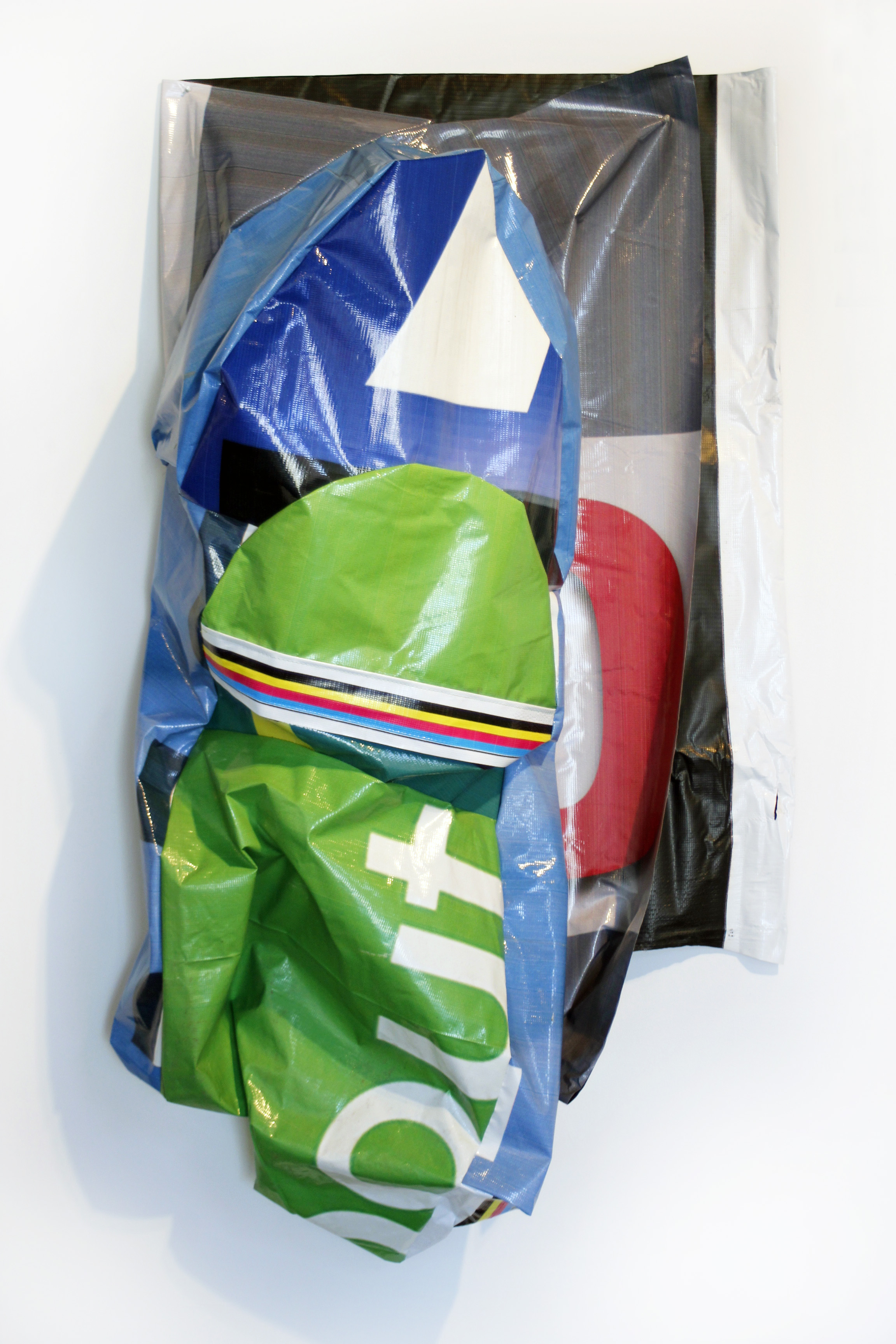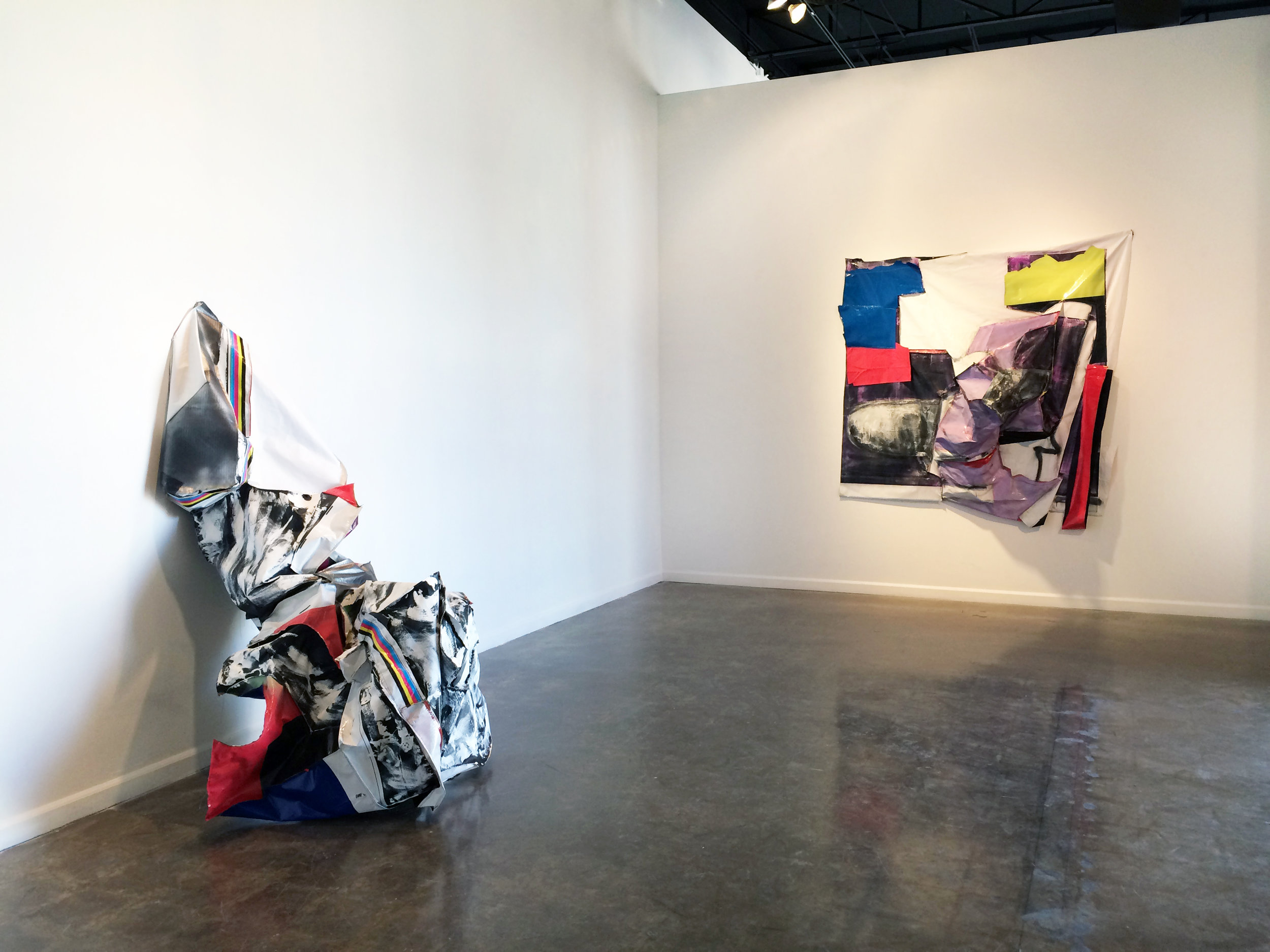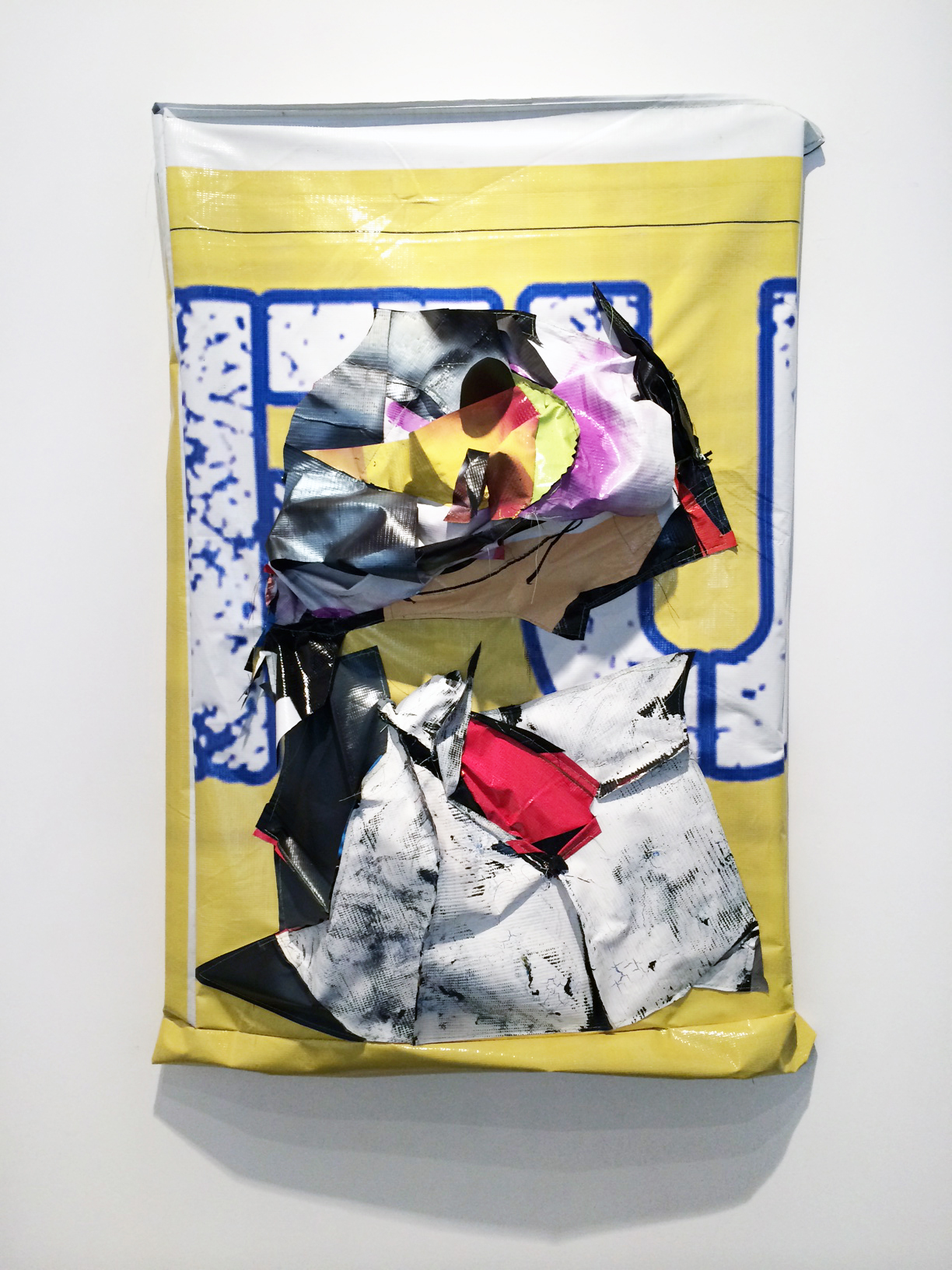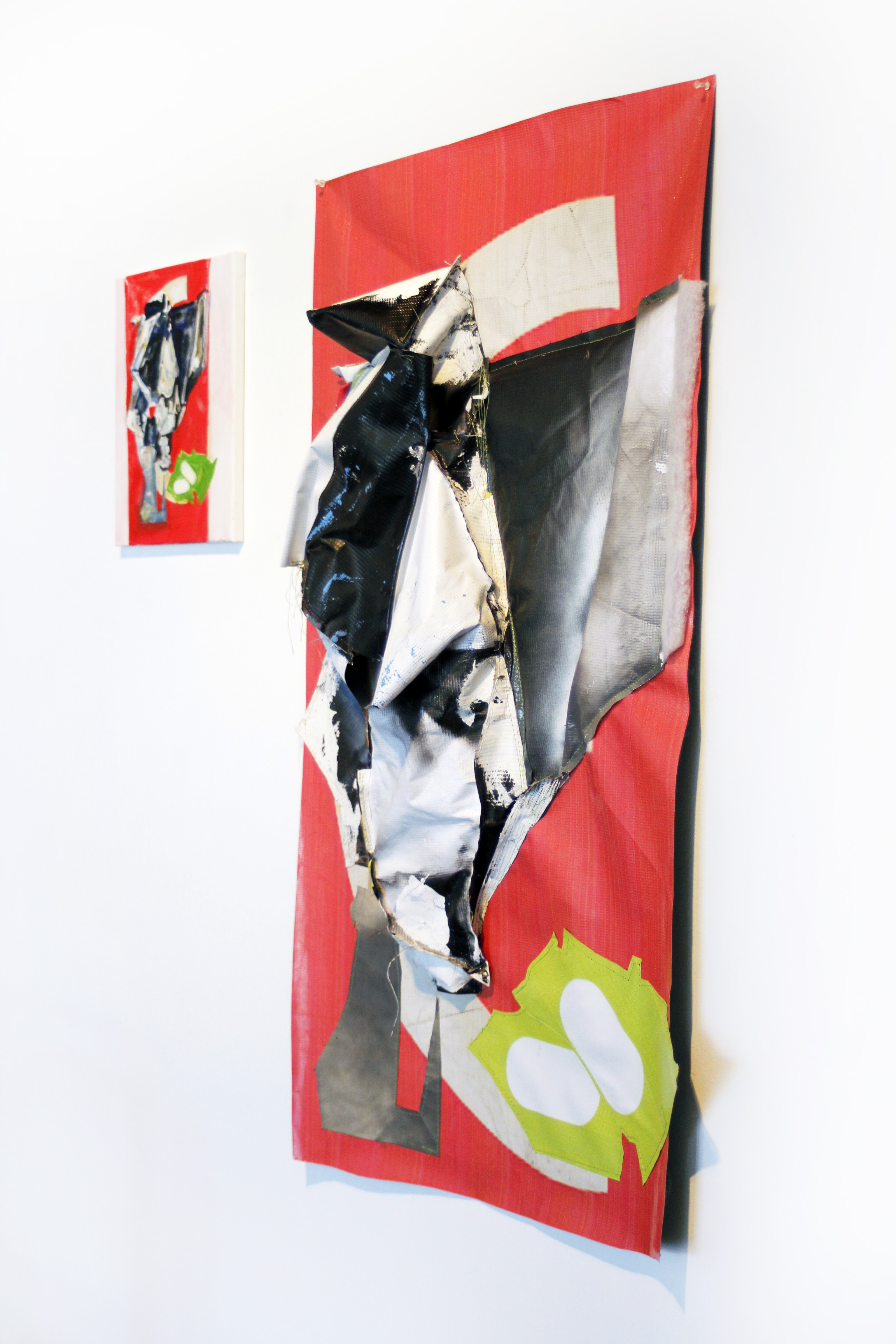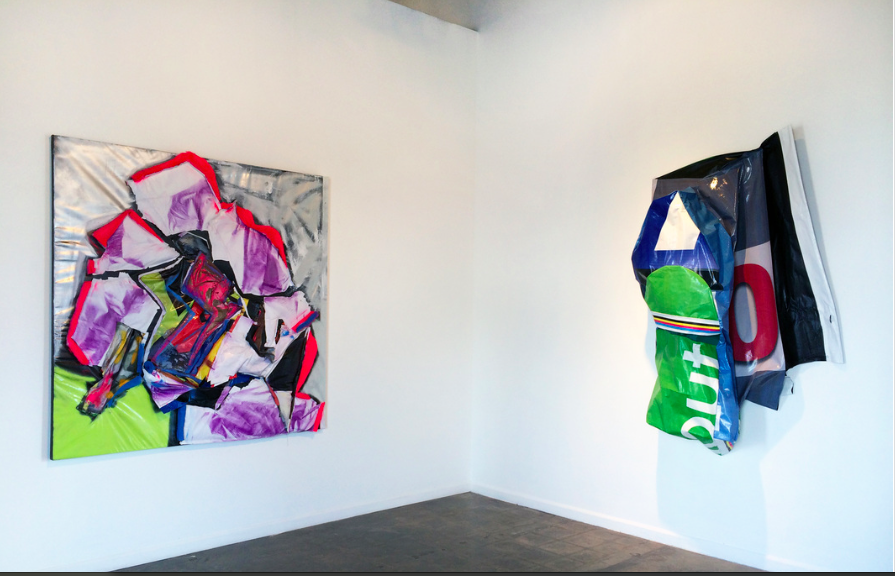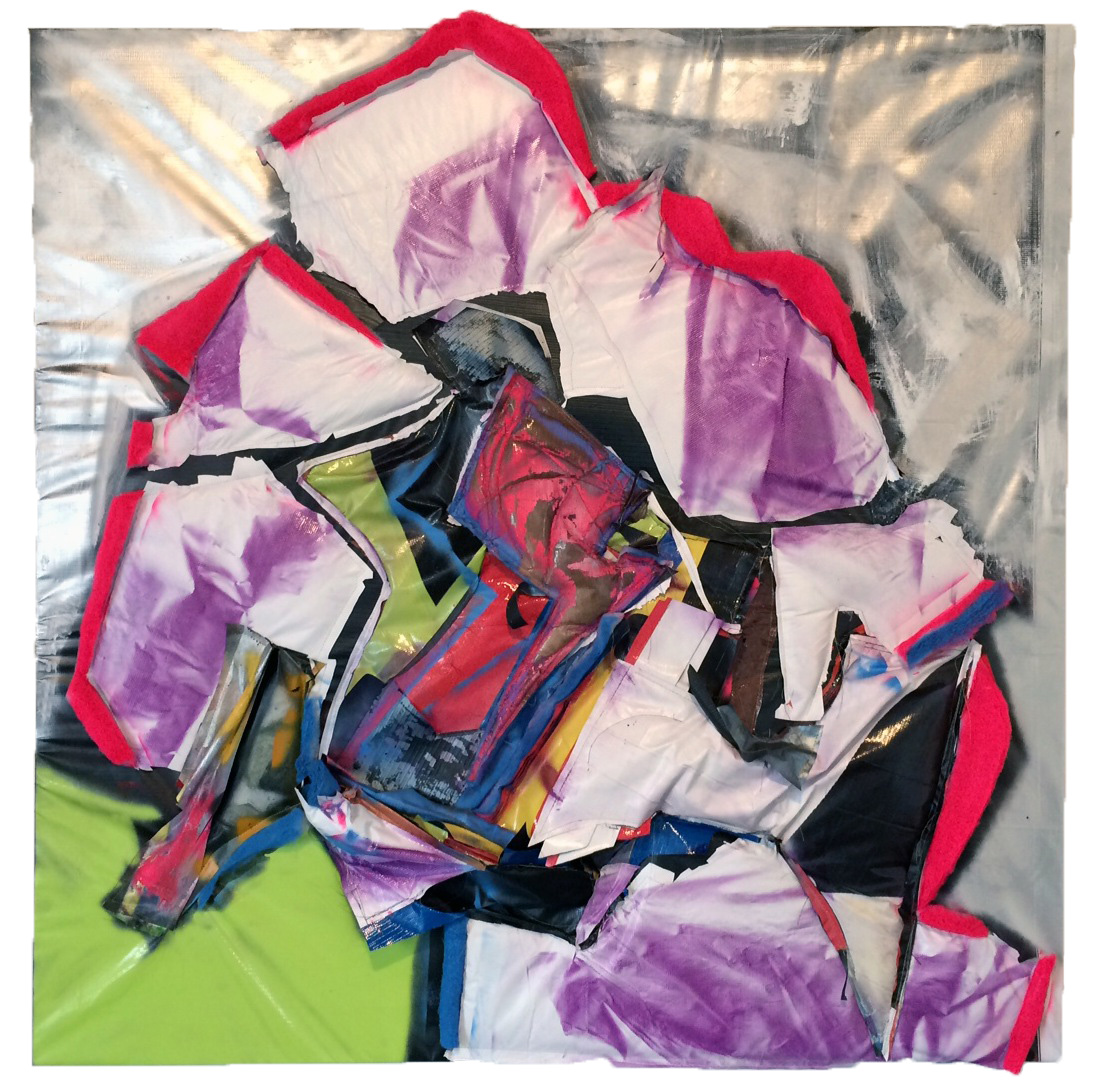Bring into the Fold
Press Release. Reclaimed Icons at Galleri Urbane, 2014.
Jason Willaford, known for his work in encaustics from 1996-2010, was in search for something new after leaving the light and vastness of Marfa, Texas and moving to Dallas in 2009. His new landscape consisted of a multitude of discarded, petroleum-based billboards. Seeing them lose their importance with technology moving forward with LED billboards, iPhones, Google Glass and the like, he wondered what became of these abandoned billboards. After finding a local resource, Willaford began his exploration of de-constructing vinyl.
The first series, “Reclaimed Icons” showcased quilted, cut and sewn vinyl that re-interpreted the billboard’s original message. Willaford soon realized that he didn’t want the text or message to dictate what the subject matter would be, so he began cutting up the vinyl, using the images as paint to create vinyl abstractions. The “Vinyl Exposed” series sits on a fine line of painting and sculpture; it’s intertwined with a painterly approach, with arrangements of color and form in mind rather than message, questioning how a painting is perceived. Willaford also frequently implemented the stitching to push the pieces towards three-dimensionality, forming a variety of picture planes and illusions. Spray paint added yet another dimension. There is a visceral element to Willaford’s work, one of multiple layers of vinyl sewn together then sliced open, asking to viewer to ponder what lies beneath.
The recent series, “Bring Into the Fold”, which opens in Dallas November 22nd, with an opening reception from 6 - 9 PM, further explores Willaford’s constructivist methodology. It references the prolapse, the idea that these pieces are captured or galvanized at intervals in space and time by sewing pieces of vinyl together, as well as conglomerate constructions, where the artist either revisits or remains in the moment with the pieces. For Willaford, it’s not so much about manipulating or trying to make a material look like something recognizable; it’s more of capturing the beauty of an object. By pulverizing the work into itself with spray paint or other materials and mounting it on the wall, it begins to take flight and relax into its environment. Willaford suggests remembering a moment in time and revisiting those feelings continuously when one looks at the object. Observation has progressed into small paintings that convey to the public how Willaford see the objects. “Bring Into the Fold” is an obvious nod to the loose origami shapes as well as the idea that there are multiple ways to bring the viewer deeper into Willaford’s thoughts.
